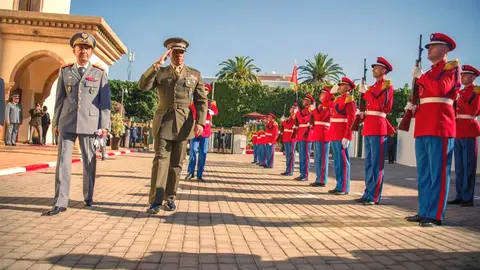Spain, the Favorite Getaway for Moroccans — and Moroccans, the Travelers Southern Spain Welcomes Most

- A Natural Cultural Bridge
- A Destination for All Ages and Tastes
- A Relationship That Benefits Both Sides
- More Than Tourism
While physical proximity plays a role, what truly sustains this connection is familiarity, ease, and a sense of belonging that Moroccans feel when they visit Spain.
A Natural Cultural Bridge
Separated only by the Strait of Gibraltar, Morocco and Spain have centuries of shared history and a geography that invites constant exchange. Flights between Casablanca and Madrid take under two hours. Ferries between Tangier and Algeciras or Tarifa run daily. Many Moroccans also travel to Spain by road, especially during the summer and religious holidays.
But beyond the convenience, there is something deeper: a cultural resonance. Spanish is spoken or understood by many Moroccans, especially in the north. The food, rhythm of life, and Mediterranean character of Spain feel familiar and comforting — like a European cousin that shares the same tempo.
A Destination for All Ages and Tastes
Spain offers something for every Moroccan traveler: families enjoy the calm beaches and child-friendly resorts; young people are drawn to the energy of cities like Barcelona, Madrid, or Valencia; older generations appreciate the accessibility, mild climate, and cultural offerings.
What sets Moroccan tourism apart is that it’s largely self-directed. Most visitors come on their own, not through tour packages. They book apartments, stay with friends or family, and move freely — not as tourists on an itinerary, but as people who already know the terrain.
Significantly, hundreds — if not thousands — of Moroccans own second homes on the Costa del Sol, in places like Marbella, Estepona, and Torremolinos. These homes are used multiple times a year: during school holidays, long weekends, Ramadan, or simply to escape for a few days. This form of semi-permanent tourism strengthens local economies and adds stability to regions that rely on seasonal influxes.
A Relationship That Benefits Both Sides
From the Spanish side, Moroccan visitors are increasingly seen as valuable — not only because they spend, but because they return. Many visit two, three, even four times a year. They often travel in large groups, stay longer, and engage more deeply with the local culture.
Tourism operators, especially in southern Spain, have begun to recognize the Moroccan market as one of the most consistent and loyal. In many places, services are now offered in both Spanish and Arabic, menus reflect halal preferences, and cultural events are sometimes organized to coincide with Moroccan holidays or school breaks.
Importantly, these visits are not just for leisure. Many Moroccans travel to shop — especially in outlet malls and local markets — or to visit relatives, attend cultural events, or take short religious or wellness retreats. It’s an ongoing flow of movement that keeps economic and social ties vibrant.
More Than Tourism
The Spain–Morocco travel corridor represents more than tourism. It’s a living, breathing relationship — one that spans generations and grows stronger each year. For Moroccans, Spain is not seen as exotic or distant; it’s nearby, familiar, and welcoming.
In an era when travel is increasingly expensive, restricted, or transactional, the ease with which Moroccans travel to Spain — and the warmth with which they are received — stands out as a model of mutual benefit. It is travel rooted in trust, repetition, and emotional connection.
Spain doesn’t just host Moroccan tourists. It welcomes friends, neighbors, and extended family. And that, more than any promotional campaign, is what keeps it Morocco’s favorite destination — year after year.


